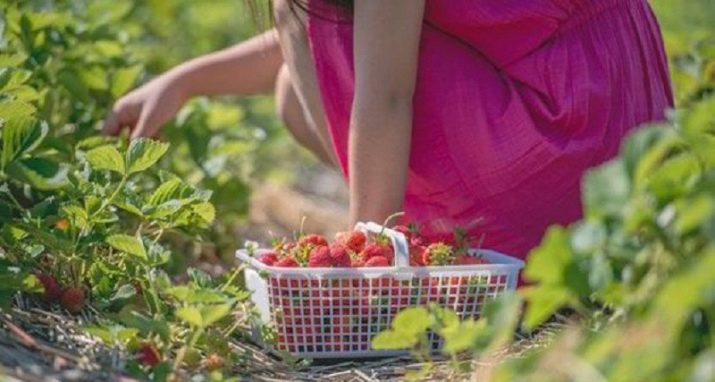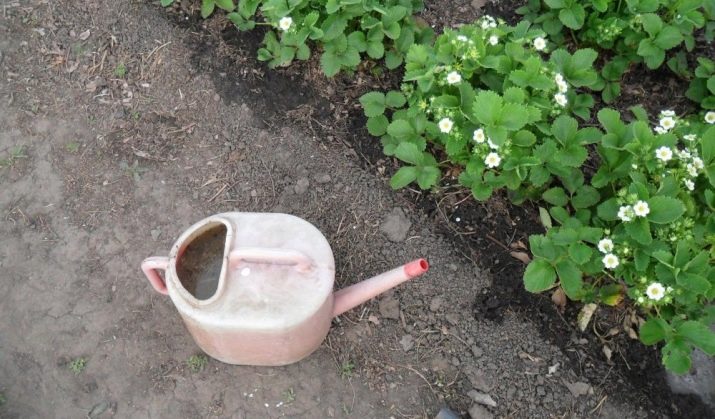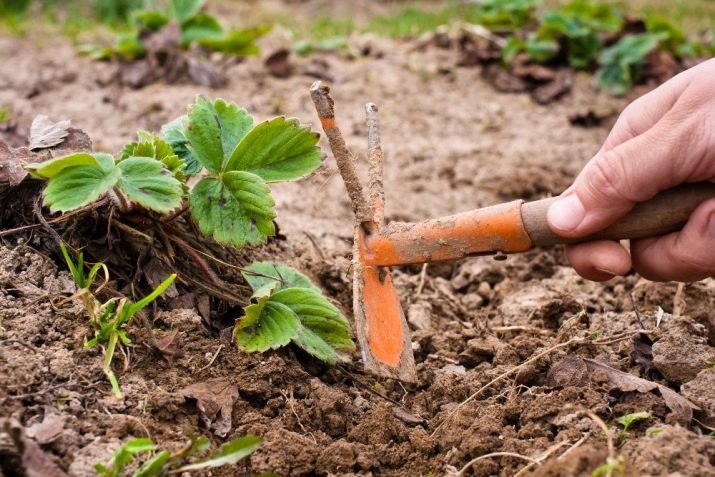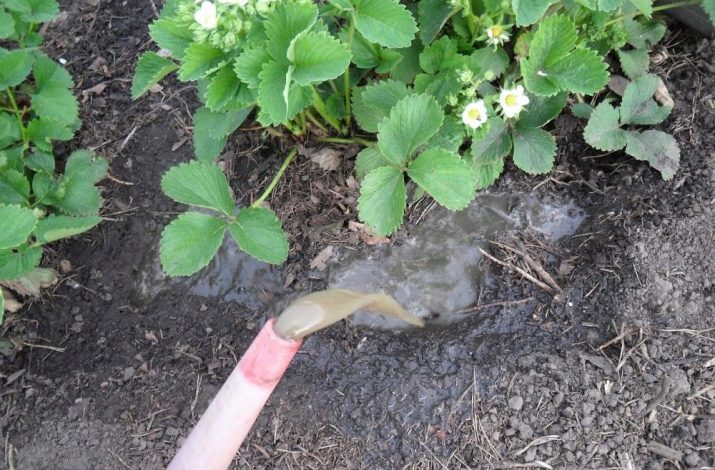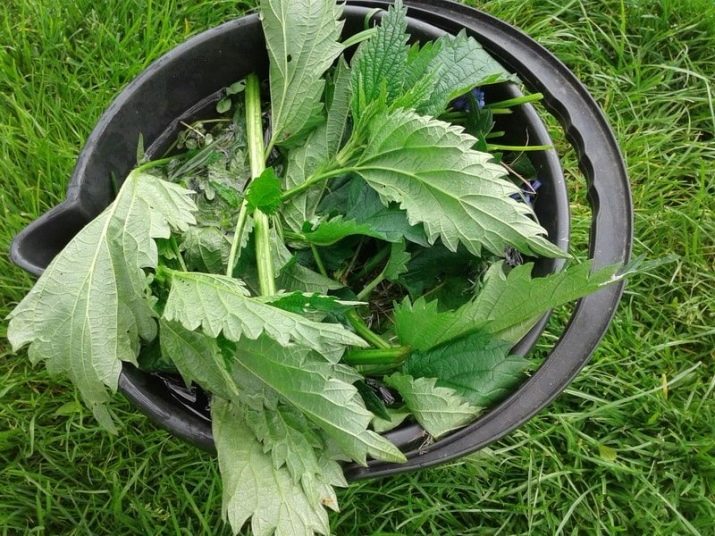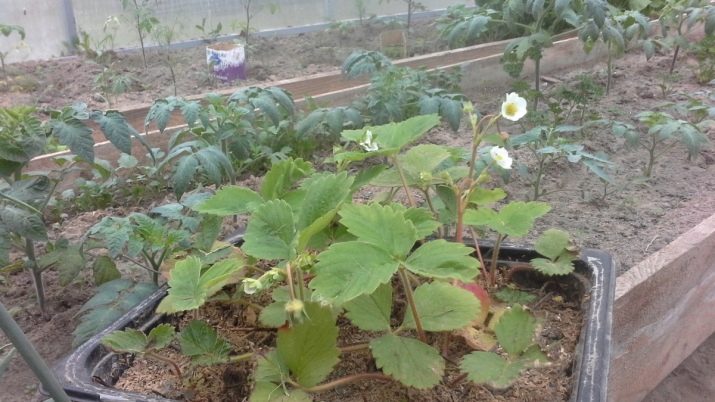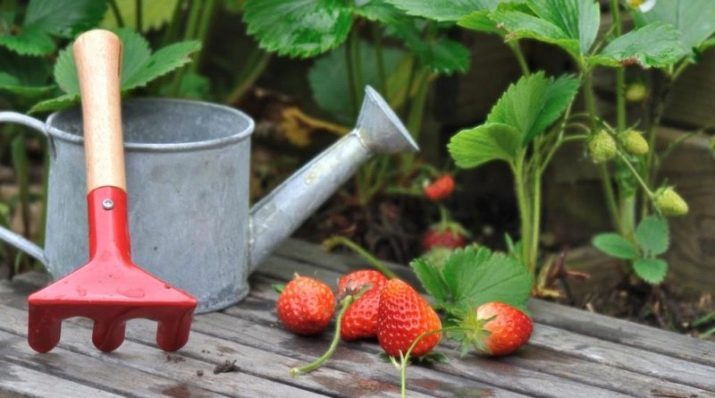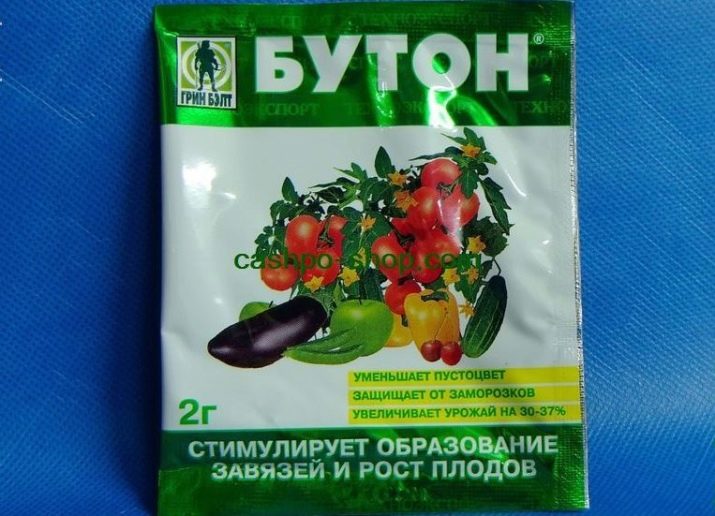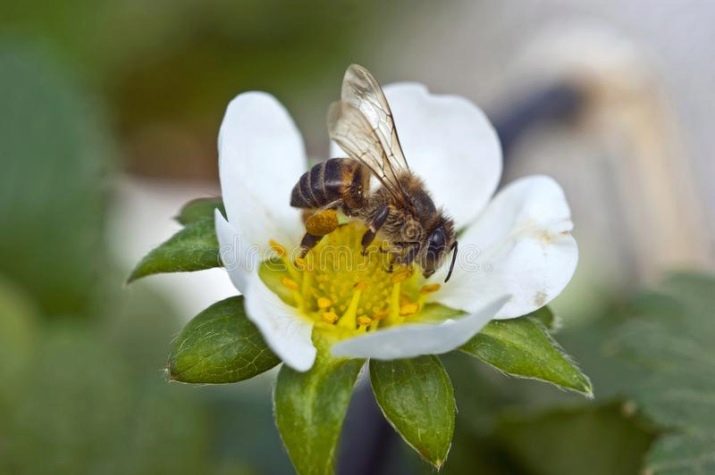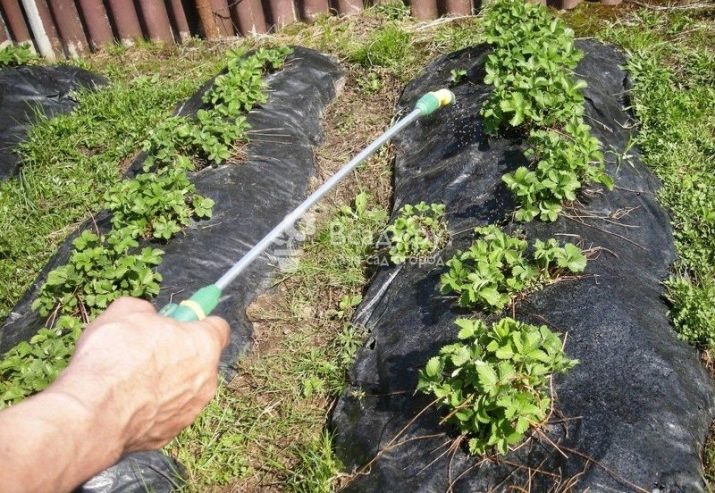Strawberry care during flowering and fruiting
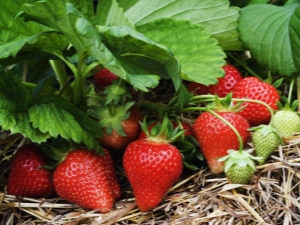
Strawberry is the first berry of the season.She can be found at almost every cottage, but at the same time, not everyone knows how to take care of her properly. Experienced gardeners note that even though strawberries do not require special care, they need to be watched at every stage of development, producing certain actions. All this is necessary so that the berries do not oversleep, do not rot, and ripen in a timely manner. This will provide the opportunity to get a rich and healthy harvest every year.
Care during flowering and fruiting is mainly in the proper watering, as well as the timely introduction of nutrients into the soil. At the beginning of the ripening of fruits, it is recommended to irrigate at the rate of 20 liters of water per square meter, that is, 2 times more than during normal periods. It is at the time of the appearance of the fruit that strawberries consume a large amount of nutrients from the soil, which go to form berries, and therefore the ground cannot be left dry.
Watering is best done in the evening, so that there is no sun in the sky. Also, when watering it is necessary to ensure that moisture penetrates the ground by 20 cm.
Irrigation is carried out with stagnant water, which is heated to a temperature of 20-25 degrees. Cold liquid should not be used.
If at the time of ripening berries it rains, then watering should be abandoned altogether, and if necessary, cover the area with a film to prevent over-wetting of the soil. This can lead to rotting of the roots and berries of the crop.
After watering, it is recommended to loosen the soil between the rows, removing at the same time weeds that prevent the plant and berries from forming. They take away nutrients and moisture from strawberries, and therefore it is necessary to remove them. Loosening the soil will also help to fluff the soil, which will allow better penetration to the roots of oxygen and water. This will affect the fact that the berries will be larger and sweeter.
Pruning whiskers during flowering
Flowering strawberries also require care. To this end, it is recommended to trim the whiskers from bushes, which take away the moisture and useful components necessary for the formation of berries. Therefore, in the period of the appearance of flowers, it is recommended to remove all mustaches from the bushes. The procedure is carried out with shears or scissors.
It is also necessary to ensure that the root system is not damaged during cutting, for this the bush must be carefully held when removing the whiskers.
At this point, it is worth removing and dry leaves. Their presence on the bushes will negatively affect the size of the berries. Mustache and leaves after cleaning must be completely removed from the site.
Strawberry fertilizer during flowering
Proper care of strawberries also implies the need to fertilize the soil where it grows. This should be done several times during the whole season. One of the stages of fertilizer comes at the time of flowering and budding.
During this period, it is necessary to water the garden with certain means, which contain a lot of potassium. It is potassium that is responsible for the beautiful appearance of the berries and their taste. Strawberries can be fed the following drugs.
Saltpeter
5 grams of saltpeter is diluted in a bucket of water, and then this composition is poured out under each bush in the amount of 500 g.
Nettle infusion
Young nettles should be cut and pour a bucket of water. This composition is infused for several days in a warm place, and just before the introduction of the site is diluted in a 1: 1 ratio with clean water. This feed will allow you to get juicy and delicious berries.
Bird droppings
Raw materials in the amount of 5 kilograms infused in the same amount of water. Next, the prepared solution is filtered and diluted in a ratio of 0.5 concentrate to 10 liters of water. This composition is then brought under the roots of plants.
Transplanting strawberries when flowering
Gardeners note that it is undesirable to hold a culture transplant during flowering. It is better to move crops to new areas in the summer or in the autumn after the harvest. If you transplant during flowering, you can damage the buds themselves, with the result that the bush will no longer be able to form well.
Also, before changing the bushes, it is necessary to remove all the berries from them, which will allow the plant to settle down better in a new place.
Weeding culture during fruiting
Strawberries in the garden will bloom and bear fruit well, if there are no weeds on the plot that take nutrients from the soil. So that they do not appear, it is necessary to periodically remove unwanted plants from the site, as well as loosen the ground.
This can be done with a rake that does not penetrate deep into the ground, but at the same time removes the crust from it. This will not damage the roots and will provide better oxygen penetration into the soil.
Such procedures are recommended to perform 3 times a week.
Pest Control
The fight against parasites is carried out during flowering and fruiting only with the help of biological preparations or folk remedies. It is recommended to use "Akvarin" and "Fitoverm", which do not harm the plants, and also well strengthen their immunity.
You can use the infusion of onion, pepper or tobacco. These compounds should be treated bushes in the evening, when there is no sun in the sky. To improve the ovary on the bushes, you can treat strawberries with the preparation “Bud”. It will help the plant to strengthen and overcome the drought or heavy rains.
Pollination culture
In case of incomplete pollination, this crop will produce a small amount of fruits that are small in size. The reason for this may be sudden changes in temperature, frequent rainfall and other conditions that are undesirable for strawberries. To strengthen the plant, he sometimes needs help in pollination.
If the area with strawberries is small, then you can artificially pollinate the plants with a brush. Such procedures are usually carried out in the afternoon. If strawberries grow in a greenhouse, then you can use fans for pollination. In this case, the pollen can be moved from flower to flower.
Seasoned gardeners recommend also use honey for pollination. It is diluted in the amount of 10 grams per glass of water and sprayed with bushes. Honey attracts bees and they pollinate flowers better.
Gardening Tips
To get a big harvest, you must follow certain rules that are familiar to experienced farmers who grow this crop on an industrial scale. They advise to produce soil fertilizer even after harvesting, using various organic fertilizers. This will have a good effect on the quantity of fruits received, as well as their quality.
After harvesting, it is recommended to add organic preparations to the site in a liquid form, spraying them with row spacing and plant roots. This should be done in wet weather, and also preferably after the procedure it is good to additionally irrigate the soil.
It is not necessary that during such a procedure, the compositions fall on the leaves.
Features of the harvest
In the season of ripening berries must be put under straw bushes or spread soft material. This will help keep the berries clean, even after watering. Mulch ensures the preservation of moisture on the ground, and also makes it impossible for weeds to appear on the plot. It protects the roots from the bright rays of the sun.
Berries are recommended to clean as they ripen and not to wait until they ripen on the entire plantation. The frequency of cleaning - two or three days, and sometimes more. We can not allow the berries to remain on the bushes for a long time, as they can overripe and soften. This will have a negative impact on their appearance, and will also cause the appearance of rot and various insects at the site that are harmful to the rest of the strawberries.
Tips for caring for strawberries during flowering and fruiting are given in the following video.

